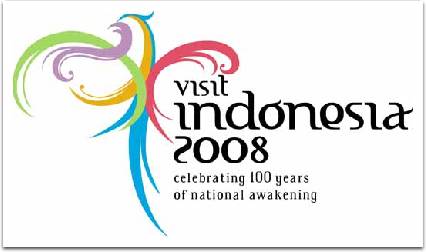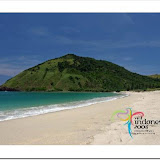- Lumba-Lumba hidung botol (torsiops trancatus)
- Giant Reef (Petrosia Sp.)
- Angkutan Kota (City Transport " small car) also available
- School of Gobi Fish (Bryaninops erythrops)
- Salvador Dali reef (Petrosia lignose)
- Kipas Laut Biru (Acanthogorgia Sp.). There are only 3 acanthogorgia Sp. In Gorontalo
- Anemon Koralimorf (Discosoma Sp.)
- Nemo
- Ikan Behang (plectorhinchus chaetodonoides), some people call it cha-cha fish caused they dance and swim around the coral.
- Blenni (Escenius Caeruliventris)
- Cardinal Fish, damsel, platax pinnatus, scorpaenopsis, oxycephala, goropa fish, butterfly fish, pusillus, cockatoo fish, Randal fish, parapterois hetururus, Bothus Sp " half face fish, frog fish, celebes
- Not forget to mention that Gorontalo is the Kingdom of Nudibrancia
- Seahorse and pigmy seahorse
- There are just too many creatures to be named in Gorontalo, Just come, wear your suit and experience the Pieces of Paradise on the Equator.
In your spare time, go cruise with the fisherman and catch/fishing your own fishes.
- Saronde Hotel
Walanda Marmis Street
Phone: (0435) 824144 - Yulia Hotel
Ahmad Yani Street
Phone: (0435) 828395 - Wisata Hotel
23 Januari Street
Phone: (0435) 821736 - City Hotel
Basuki Rahmat Street
Phone: (0435) 822437 - Krawang City Hotel
Basuki Rahmat Street
Phone: (0435) 822437 - Citra Hotel
Merdeka Street
Phone: (0435) 821249 - Melati Hotel
Gajah Mada Street
Phone: (0435) 821853 - Wisata Leato Hotel
Leato Street
Phone: (0435) 824144 - Sumber Ria
Budi Utomo Street
Phone: (0435) 23888 - Budi Utomo Hotel
Budi Utomo Street
Phone: (0435) 821564 - Mutiara Hotel
Andalas Street
Phone: (0435) 825778 - Imam Bonjol Hotel
Imam Bonjol Street
Phone: (0435) 826240
Moving Around
- Within the town, Trans Sulawesi is a land acces that connected the province in Sulawesi
- Mini bus
To access the diving spot you can use rented car/bike, then take a boat toward your spot preferences - For those who use dive companys services, they'll arrange your activities (transport, meals, lodging) the moment you arrived at Gorontalo
- Take a ride with Bentor, support by motor bike machine, for one or two passenger only. Dont worry with the rain, cause Bentor installed with veil
Dining Guide
Within the city, its easy to find any kind of food you want to have for your meal, international menu and traditional menu are available. Make your order, and youll find your meal rich in spices.
Seafood lover will be pleased here
Perkedel ikan nike (nike fish). Mashed nike fish mix with flour and spices, then fried
Pepes Ikan Nike. Fresh nike fish mixed with certain spices, wrapped with banana leaf then baked or some prefer it grilled.
Souvenir Tips
Kerawang: one of Gorontalos traditional cloth materials, which made by hand (man cloth and woman cloth for all ages). Althought Kerawang made by hand but is doesnt look like a hand made at all. Its a Must to buy and make sure its on your list
Ornaments of intricate carved wood are common in all the district
Other Things to See or Do
- Wreck of Japanese Cargo, Tjendrawasih Ship
- Sail with the fisherman
- Sentinels: Best of the Best in Diving
- Fishing
Potanga Pool with natural cool and fresh water-directly comes from the mountain spring - Otanaha Castle was the protection and defense of the Kings of Gorontalo
- White sand of Leato
- Limboto Lake
- Ayuhulalo Waterfall
- Boalemo Beach
- Bolihutuo Beach
- Bajos Tribe Village
Travel Tips
The best diving season runs from November to April
You can experienced the encounter with dolphin (torsiops truncates) around February to April
Tourist Office:
Jl. Diponegoro No. 1
Gorontalo 96115 Phone:
(0435) 821763 Fax: (0401)














